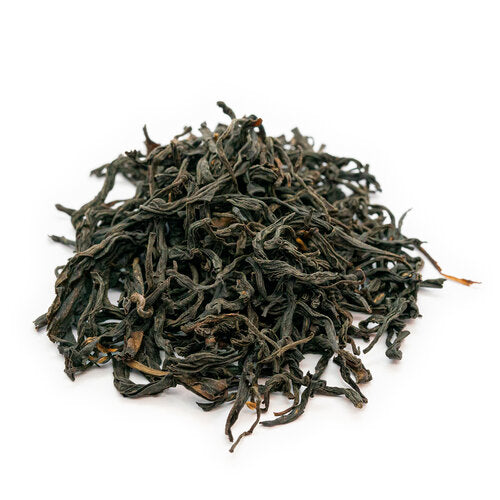This tea is a unique handmade red tea made by Fa Yu Shi Fu, a Buddhist monk. Historically, many monks in China made teas known as Chan Cha to share with visitors as a gesture of compassion and create karmic connections. The practice is much rarer nowadays.
When Fa Yu Shi Fu first arrived at the South Shao Lin Temple, he discovered many abandoned tea trees in the back mountain of the temple. Many are decades to hundreds of years old. Most of these tea trees are Wu Long cultivars, but Fa Yu Shi Fu makes them into red teas because it is suitable for a monk's stomach with a vegetarian diet. He's a one-person team that handmakes all of his teas in ultra-small batches. We enjoy supporting Fa Yu Shi Fu's devotion to keeping the Chan Cha-making tradition alive by making his tea accessible to our community.
Fa Yu Shi Fu has made a few varietals with his Chan Cha: Mei Zhan is umami and mildly sweet with notes of orchid and plum. Mao Xie tastes like sweet dates with silky tannins and a hint of cinnamon. The blended varietal has Mao Xie and Huang Dan, which together is yeasty, malty, and floral.
Red tea is wilted, then after the stems have lost enough moisture to snap, the wilted leaves are rolled vigorously to break the membranes sufficiently. This step allows complete oxidation that will facilitate the fermentation later on. Red tea is rolled for the most extended amount of time among all teas, often for over an hour. The rolled leaves are shaken loose and evenly layered into a bamboo basket and then covered with wet clothes to ferment. Greener leaves are picked out in a tedious picking step before baking dry over charcoal ash. Ti Xiang is a baking technique designed to enhance and purify the tea's aroma without altering its original flavor profile. It is usually done at least three weeks after the tea has been baked. It is a tricky step that many opt to skip because, if not done correctly can quickly ruin an otherwise mediocre tea.








